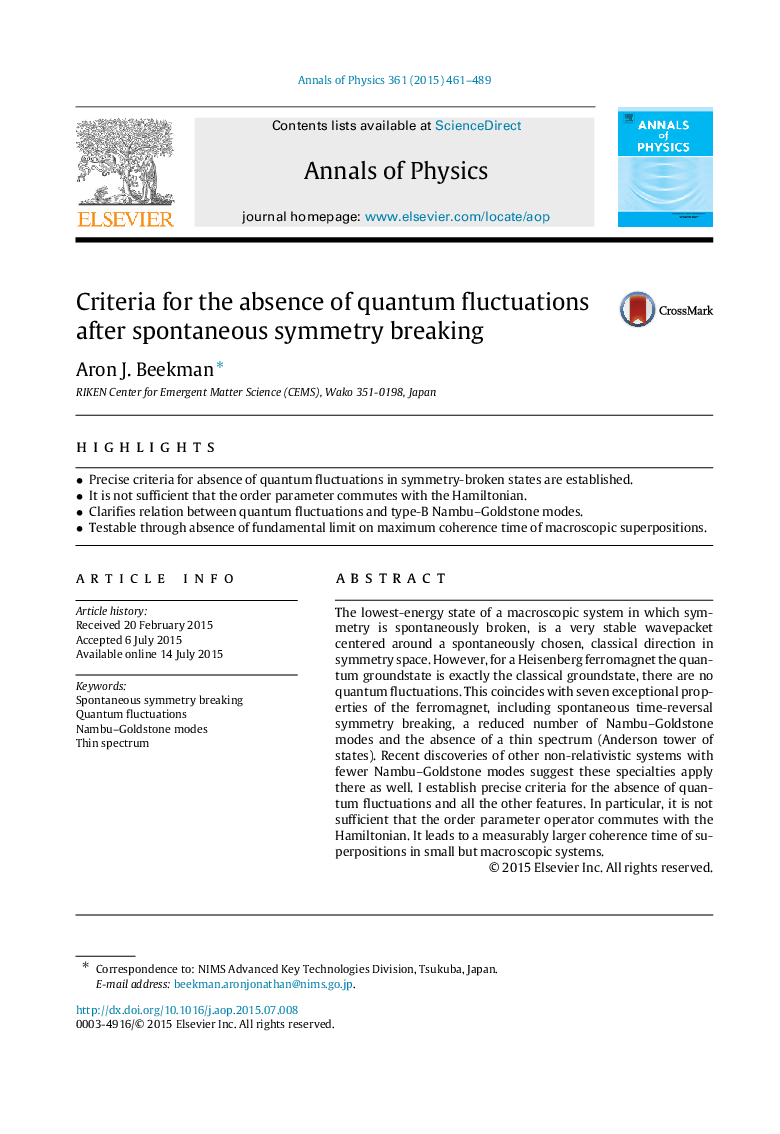| Article ID | Journal | Published Year | Pages | File Type |
|---|---|---|---|---|
| 1856048 | Annals of Physics | 2015 | 29 Pages |
•Precise criteria for absence of quantum fluctuations in symmetry-broken states are established.•It is not sufficient that the order parameter commutes with the Hamiltonian.•Clarifies relation between quantum fluctuations and type-B Nambu–Goldstone modes.•Testable through absence of fundamental limit on maximum coherence time of macroscopic superpositions.
The lowest-energy state of a macroscopic system in which symmetry is spontaneously broken, is a very stable wavepacket centered around a spontaneously chosen, classical direction in symmetry space. However, for a Heisenberg ferromagnet the quantum groundstate is exactly the classical groundstate, there are no quantum fluctuations. This coincides with seven exceptional properties of the ferromagnet, including spontaneous time-reversal symmetry breaking, a reduced number of Nambu–Goldstone modes and the absence of a thin spectrum (Anderson tower of states). Recent discoveries of other non-relativistic systems with fewer Nambu–Goldstone modes suggest these specialties apply there as well. I establish precise criteria for the absence of quantum fluctuations and all the other features. In particular, it is not sufficient that the order parameter operator commutes with the Hamiltonian. It leads to a measurably larger coherence time of superpositions in small but macroscopic systems.
